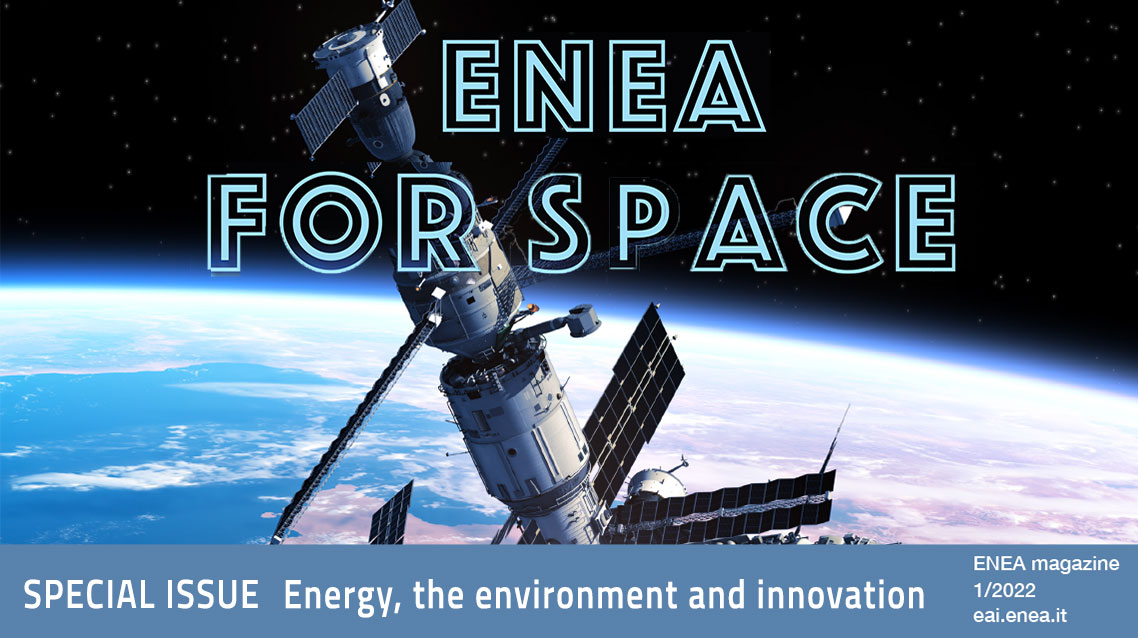Italian National Agency for New Technologies, Energy and Sustainable Economic Development

Space: ENEA-ASI agreement to generate energy on the moon with mini-reactors
On the occasion of the National Space Day online an ENEA special issue on technologies and projects.
Designing a compact, light, reliable and safe mini-nuclear italian made reactor to power future lunar bases and the subsequent colonization of Mars and deep Space. This is the objective of a collaboration agreement signed by ENEA and the Italian Space Agency (ASI) exploiting the multidisciplinary skills, infrastructures and expertise of the ENEA Research Centers of Bologna and Brasimone (Bologna) and ASI to build a Space Nuclear Reactor (SNR)
The announcement was made on the occasion of the second National Space Day , commemorated by ENEA by publishing a special issue of the magazine Energy, the Environment and Innovation (EAI) with projects and activities in this increasingly important sector; among the initiatives, a virtual visit to the Biotechnology Laboratory of the ENEA Casaccia Research Center (Rome) where the researchers presented some of the activities conducted in collaboration with ASI to support human life in long-term Space missions.
"The basic principles to design a Space Nuclear Reactor are modularity, capable of easily improving power availability, and redundancy of the essential systems to ensure maximum reactor safety", pointed out Mariano Tarantino, head of the ENEA Division of Nuclear Safety and Sustainability. "Particular attention - he said - will be paid to minimizing the total weight of the system to make possible to transport on board a cargo rocket and to the reliability of components, favoring, where possible, mature italian made technologies".
Over the next 15 months, ENEA and ASI will outline the features of the Italian Space Nuclear Reactor, identify possible operational scenarios (lunar, Martian and deep space exploration), critical technologies, do a cost-benefit analysis with different interest scenarios and define a R&D roadmap for the next phases.
ASI has shown interest in this technology which in the long term could contribute to solve energy problems both in pursuing space exploration and deep space travel. Having a compact, modular, reliable, small-sized reactor capable of guaranteeing the necessary safety for human life in an already hostile environment would constitute a great potential for exploration. Furthermore, operating with small dimensions would allow to reduce production costs, development times and would make it easy to transport and use it in different scenarios.
Nuclear reactors for space applications have been studied since the 1950s as a reliable, efficient and compact alternative. If in the last century the use was limited to some prototypes in the United States and Russia, since 2000 the renewed interest in the human exploration of the Moon and Mars has contributed to increase investments to design small reactors for future missions, to guarantee independence and full functionality of "space outposts".
Internationally, there are already other mini-reactor projects. Among the most promising is Kilopower, developed by NASA together with some of the most highly regarded US research centers, including the Los Alamos National Laboratory and the Nevada National Security Site. Kilopower generates energy through nuclear fission, is capable of producing up to 10 kilowatts of electricity for at least ten years, enough to supply a set of residential buildings. Four Kilopower reactors, with a total power of about 40 kW, could satisfy the energy needs of a station on Mars.
